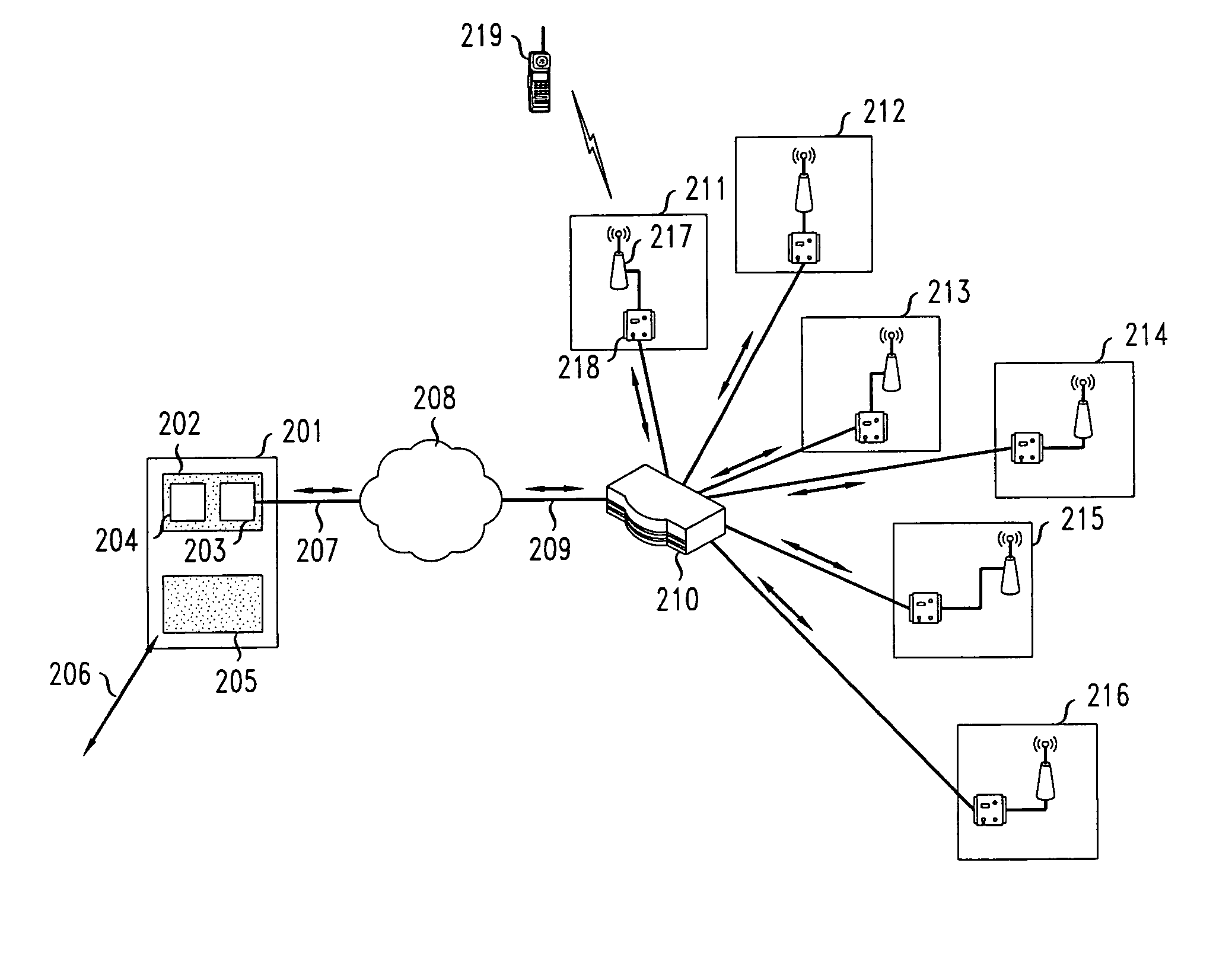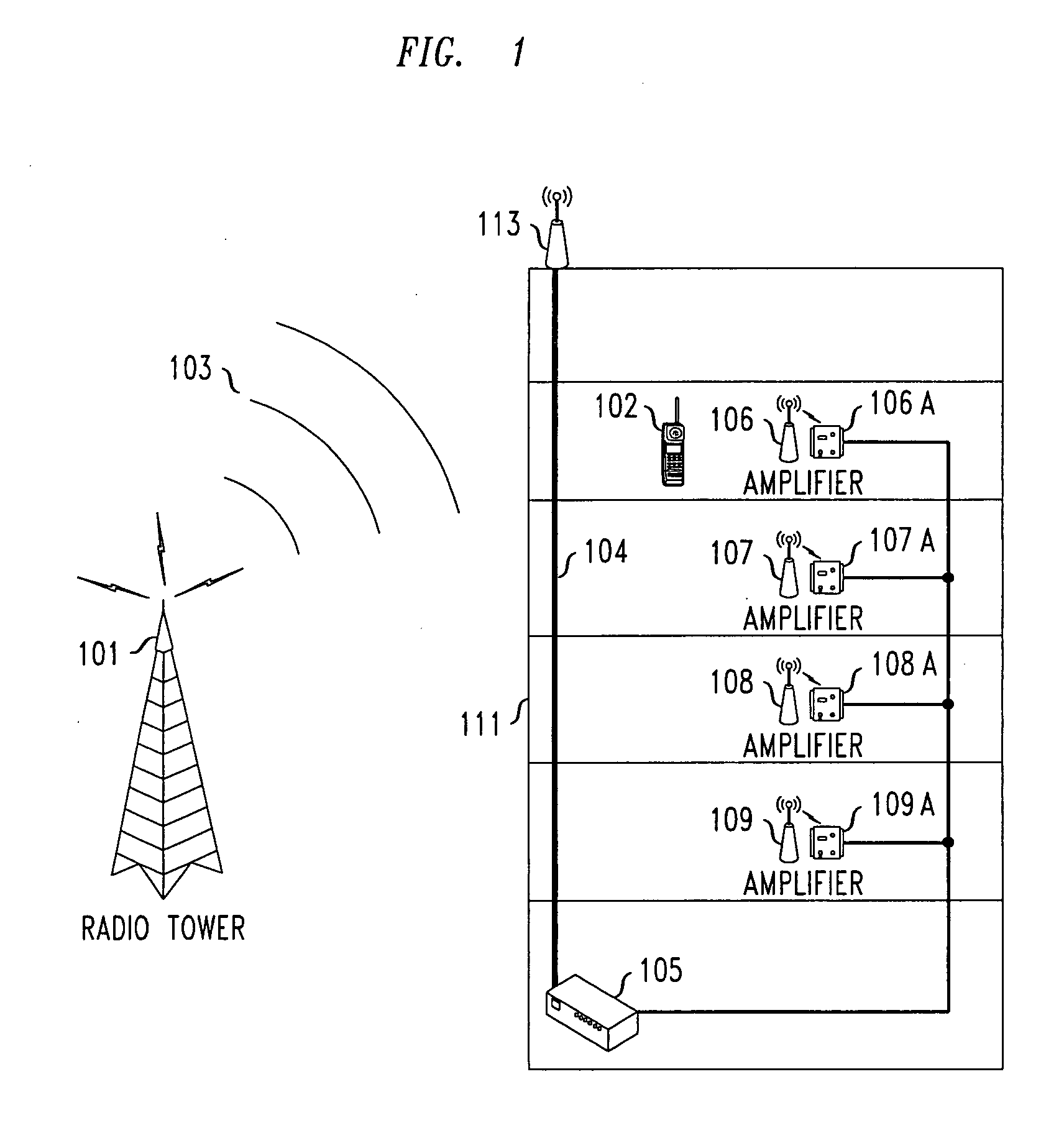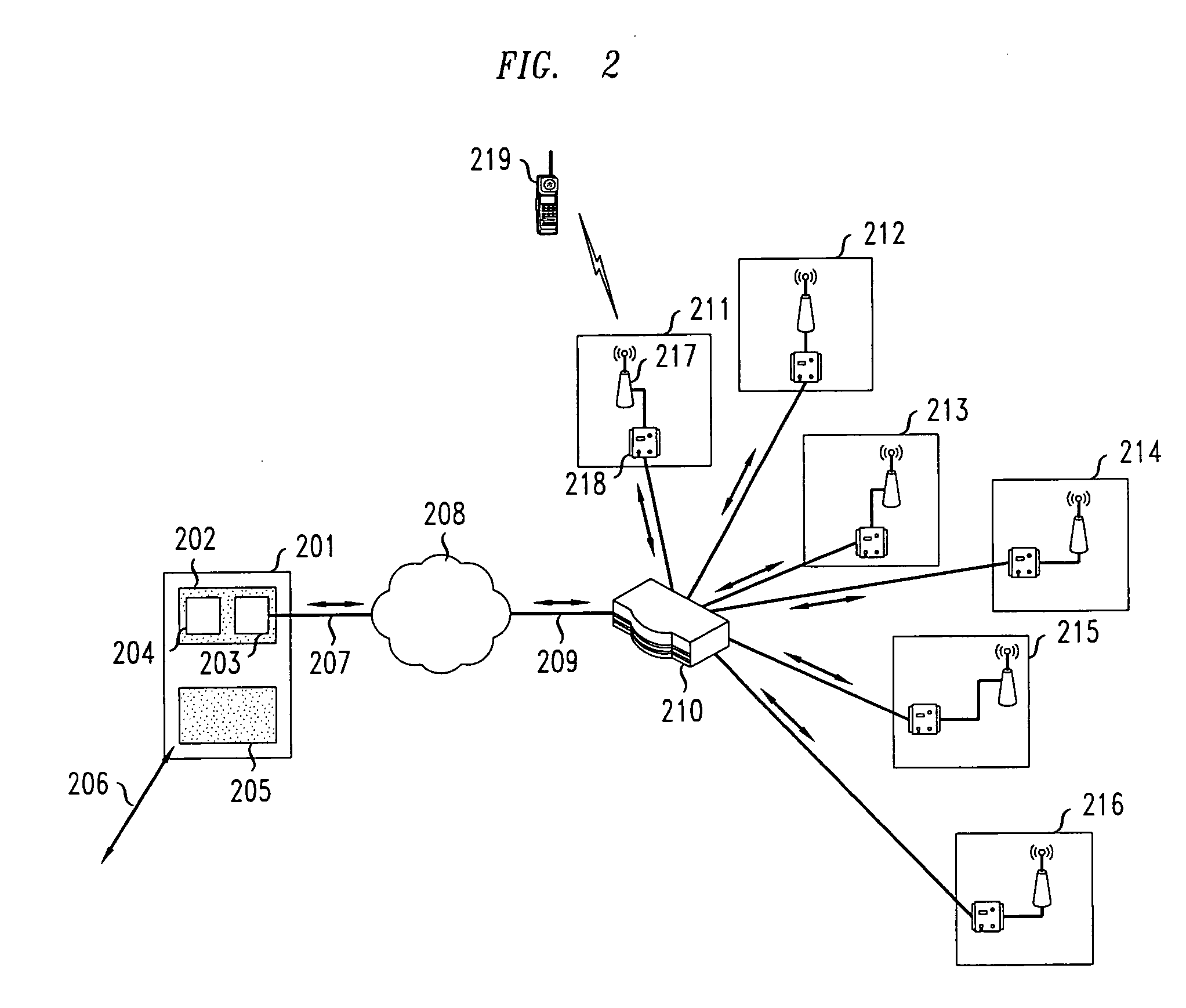Method and apparatus for cellular communication over data networks
a technology of data network and cellular communication, applied in the field of wireless communication, can solve the problems of significant source of degradation, limited in certain regards, and degraded signal quality between a cellular base station and a handset under certain circumstances, so as to increase the possible number of available radio transceivers and reduce the number of packet streams
- Summary
- Abstract
- Description
- Claims
- Application Information
AI Technical Summary
Benefits of technology
Problems solved by technology
Method used
Image
Examples
Embodiment Construction
[0014]FIG. 2 shows an in-building communications network in accordance with the principles of the present invention. In the network of FIG. 2, base station 201 sends and receives messages from a wireless network via path 206. Base station 201 is, for example, similar to a base station used in a traditional CDMA network such as a OneBTS base station manufactured by Lucent Technologies, Murray Hill, N.J. One skilled in the art will recognize that such a base station traditionally has three main components: 1) a network interface for interfacing with the other components of the cellular network (e.g., a radio network controller (RNC)); 2) a digital baseband shelf typically having a processor (e.g., a CDMA modem unit (CMU)) for coding and decoding incoming and outgoing message traffic, as well as a radio (e.g., a Universal CDMA Radio (UCR)) for modulating / demodulating the coded digital message traffic onto / from a carrier signal; and 3) an RF shelf for amplifying the modulated signal and...
PUM
 Login to View More
Login to View More Abstract
Description
Claims
Application Information
 Login to View More
Login to View More - R&D
- Intellectual Property
- Life Sciences
- Materials
- Tech Scout
- Unparalleled Data Quality
- Higher Quality Content
- 60% Fewer Hallucinations
Browse by: Latest US Patents, China's latest patents, Technical Efficacy Thesaurus, Application Domain, Technology Topic, Popular Technical Reports.
© 2025 PatSnap. All rights reserved.Legal|Privacy policy|Modern Slavery Act Transparency Statement|Sitemap|About US| Contact US: help@patsnap.com



